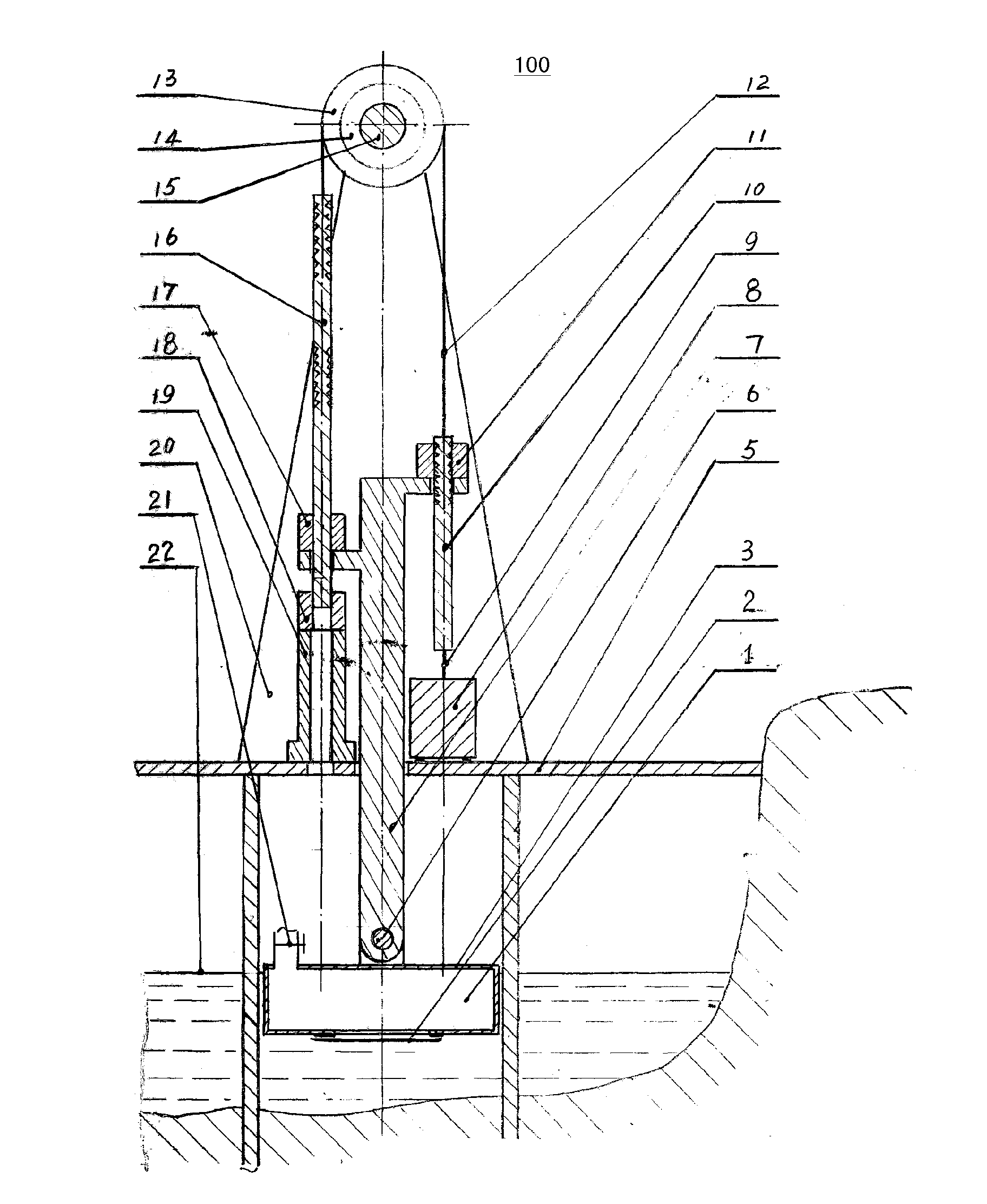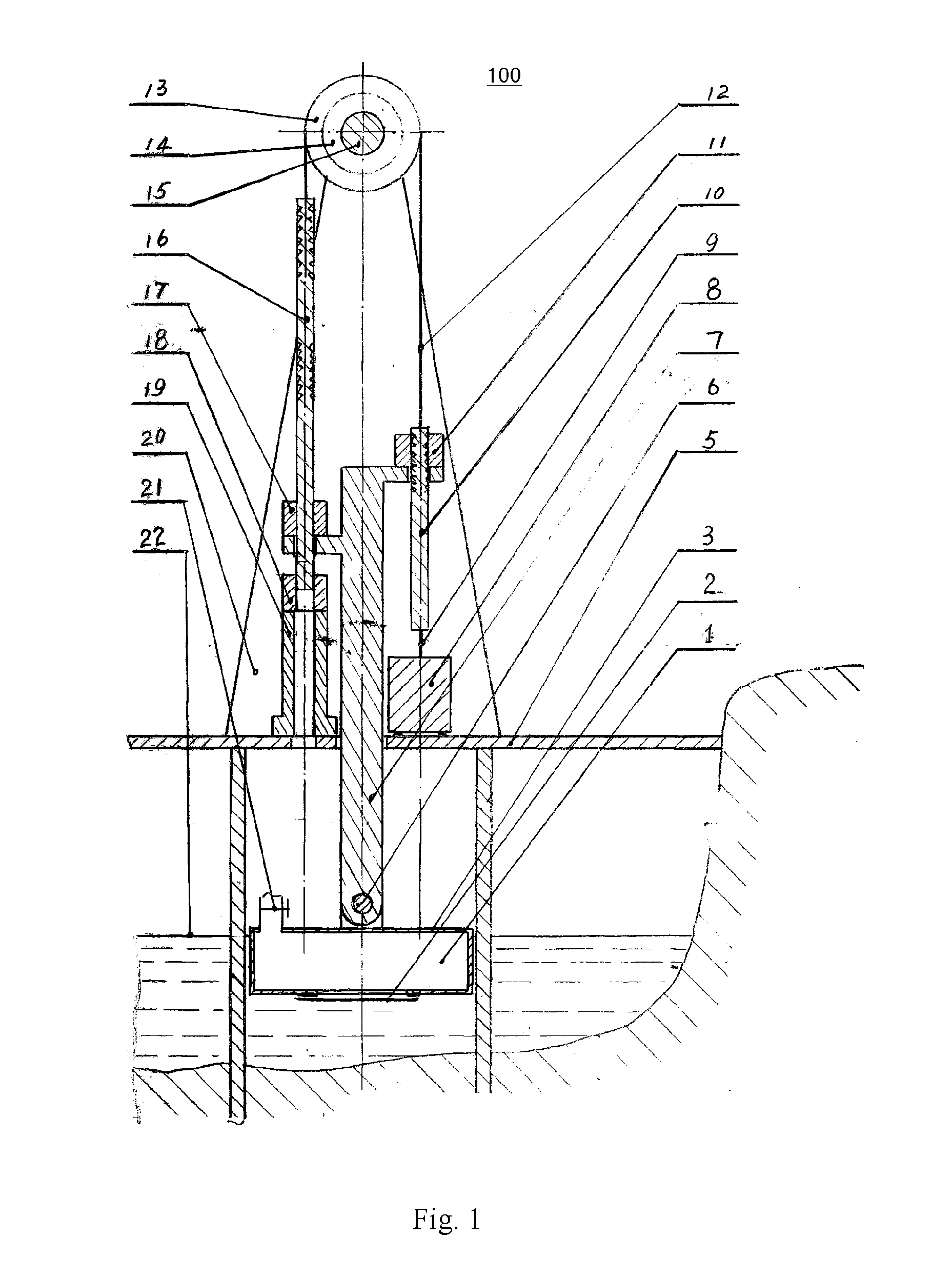Method And System For Tidal Energy Storage And Power Generation
a technology of tidal energy and power generation, applied in the field of methods, can solve the problems of inexhaustible or inability to use tide energy, affecting the development and utilization of tide energy, and double the work and cost of civil works and electromechanical equipment, so as to achieve the effect of significantly expanding the application scope of tide energy
- Summary
- Abstract
- Description
- Claims
- Application Information
AI Technical Summary
Benefits of technology
Problems solved by technology
Method used
Image
Examples
second embodiment
[0101]Comparing with the second embodiment, the third one uses a floating and spreading seawater evaporation tower 40, without the vacuum pump.
[0102]As illustrated in FIG. 6, for the purpose of reducing the height of the bracket 20a, the evaporation tower 40 is provided in a pit.
[0103]FIGS. 7a-7c show the fourth embodiment of the present invention, which adds a pressure tank 51 and a vacuum tank 50 on the basis of the first embodiment. The vacuum tank 50 and the pressure tank 51 both connect the upper valve 21 with pipelines. The pipelines connecting the pressure tank 51 is provided with a solenoid valve 510, and the ones connecting the vacuum tank 50 with a solenoid valve 500. As illustrated in FIG. 7a, at low tide, both the solenoid valve 510 and the solenoid valve 500 assume a close state, and the empty buoy 3 is not in communication with the pressure tank 51 and the vacuum tank 50. As illustrated in FIG. 7b, at high tide, the lower valve 2 and the upper valve 21 are both opened,...
fifth embodiment
[0105]FIG. 8 illustrates another embodiment of the power generation system with tide buoyancy and gravity ratio energy storage according to the present invention, i.e. the FIG. 8 only shows a system unit 400, and the whole system may be configured by at least one such system unit 400. In FIG. 8, (a) is a front view, (b) is a cross-sectional view, and (c) is a top view. The main difference from the embodiment in FIG. 1 is that, the system unit 400 in FIG. 8 has an energy storage component region with several groups of energy storage components for continuously generating electricity. FIG. 8 takes A, B, C groups as an example to illustrate, each of which components has the same way to store energy as that of the embodiment in FIG. 1, and the buoy bracket, multiple clutches, a lifting rod and a lowering rod coordinates with each other to complete the ratio energy storage. But they are different in releasing the stored energy. As shown in FIG. 8, all the groups share a buoy bracket 7. ...
ninth embodiment
[0277]FIG. 15 shows the ninth embodiment which forms a three-dimensional energy integrated utilization field with tide, wind force, and solar energy.
[0278]Traditional methods of solar power generation and wind power generation, when applied to large-scale construction, have two disadvantages, which result in large scale of investigation for power plants, and very high cost of power generation, affecting the development of the solar and wind power generation:
[0279]1. both a wind farm and a solar power plant need to occupy a large area of land, which not only increases the cost of construction and management, but also, from the perspective of resource utilization, produces great waste of land resource.
[0280]2. both wind and solar power generation need a large quantity of battery groups and inverters to ensure the continuous generation and the quality of power, which not only increases the cost of power generation, but also brings secondary pollution from chemicals produced during the ...
PUM
 Login to View More
Login to View More Abstract
Description
Claims
Application Information
 Login to View More
Login to View More - R&D
- Intellectual Property
- Life Sciences
- Materials
- Tech Scout
- Unparalleled Data Quality
- Higher Quality Content
- 60% Fewer Hallucinations
Browse by: Latest US Patents, China's latest patents, Technical Efficacy Thesaurus, Application Domain, Technology Topic, Popular Technical Reports.
© 2025 PatSnap. All rights reserved.Legal|Privacy policy|Modern Slavery Act Transparency Statement|Sitemap|About US| Contact US: help@patsnap.com



